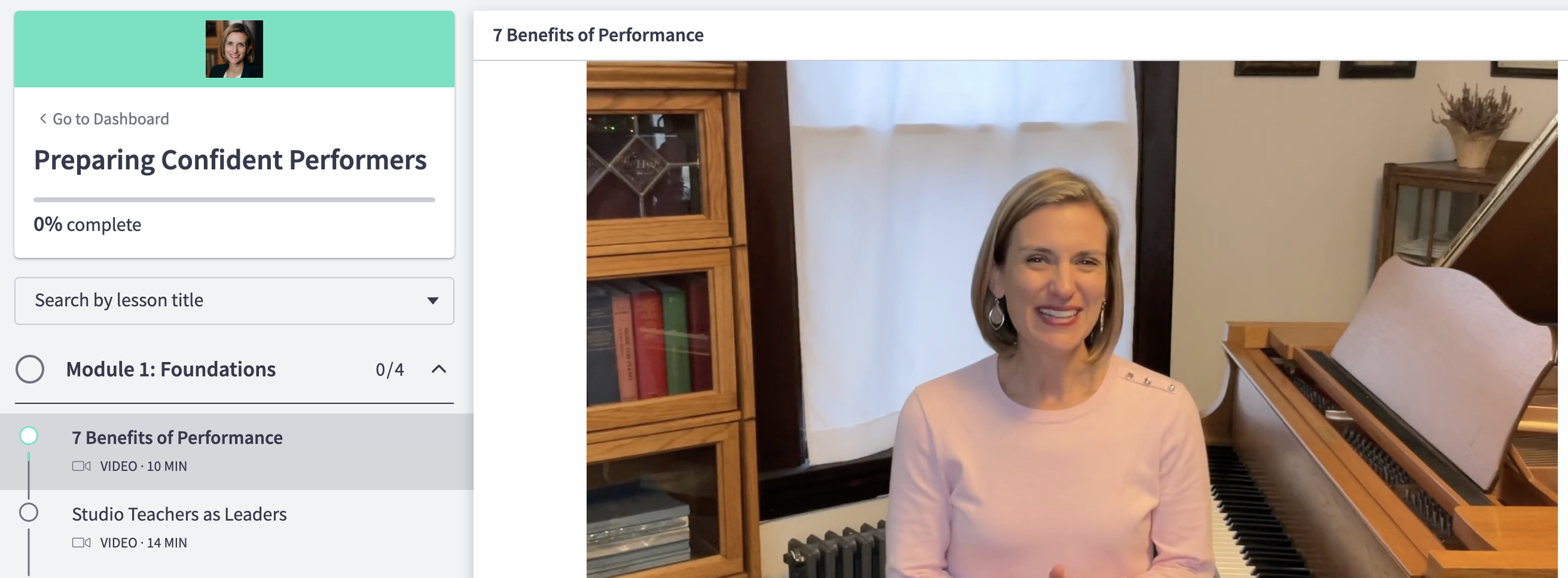SIX TIPS: Solve any technical problems within a piece
HELP PIANO STUDENTS BE READY FOR AN UPCOMING PERFORMANCE
The next of my Six Tips to Ensure Your Student is Ready for a Performance is to solve any technical problems within a piece. You can’t perform a piece well if you can’t technically manage to play it!
the marriage of technique and artistry
While the intent of this post is not to advocate for one technical system or another, I can say from years of adjudication experience that students who play with freedom and ease of movement are the ones who are most free to play expressively, and therefore have a “successful” performance.
Remember - technique is not a system of drills like scales, chords, and arpeggios. Technique is the movements we make with our bodies (hands, fingers, wrists, forearms, arms, torsos, and more) to create sound at our instrument. It requires different technical movements to create a loud accent such as those found in works by Prokofiev than it does to play soft planing chords such as those found in a prelude by Debussy.
My hope for my long-term students is that they develop a “technical toolbox” of movements they can use to create various sounds. Along with this, I hope that they feel equipped with a toolbox of practice strategies to solve technical challenges.
the importance of the first lesson on a performance piece
As teachers, it is our responsibility to preview any technical challenges in a piece in the first lesson on any piece, particularly on any piece that might be used in a performance.
If you are a less experienced teacher, you might not always know what will be technically difficult for a student in any given piece. Don’t worry - this is a skill that grows over time! Once you have taught a particular piece or a particular style of piece 2 or 3 times, you’ll know what types of things are regularly troublesome for students.
So, is this your student’s first repertoire piece with
triads (rather than open 5ths)?
Alberti bass?
chromatic scales?
parallel octaves?
double thirds?
arpeggiated figures spanning a wide range?
voicing of melody and accompaniment in one hand?
Or do students frequently struggle with consistent fingering on this particular piece?
Or is there a set of 4 measures that are just terribly tangly and treacherous?
These are all items which you can address in the first lesson with a student, drawing their attention to the problem, and giving them practice strategies to deal with that problem in the very first week of lessons.
Are you familiar with my YouTube playlist all about how to teach intermediate piano repertoire? If not, click the image to the right. In each of these videos, I preview what will be challenging for students, in regards to technique and everything else. Use these videos to help you preview what might be technically difficult and what you need to address in the very first lesson.
Proactive vs. reactive teaching
Thinking ahead to what might be technically difficult in any given piece of repertoire is one way that we can be proactive teachers — good leaders of our studio.
I’m sure we can all recall times in our teaching when we felt we were stuck in a reactive position, either because we did not anticipate an upcoming problem, or because of circumstances out of our control. These memories are often the ones that make us cringe!
Hopefully you also have memories of times when you operated your studio or taught in a proactive manner, giving your students tools to tackle whatever challenge lay ahead of them, which lead to more efficient learning and a more joyful process.
Here’s a sneak peak of what it looks like inside my course called Preparing Confident Performers. You can see that Module 1, “Foundations,” after going over the benefits of performance, I start the course off with a discussion of Studio Teachers as Leaders. I firmly believe that operating proactively as the leaders of our studio can benefit our students as well as make our work much more fulfilling.
Click on the photo to learn more:

